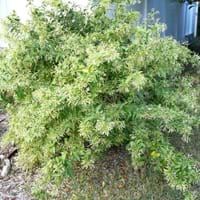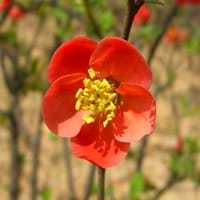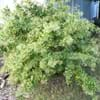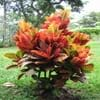Life Span
Perennial
Perennial
Origin
Mexico, Latin America and the Caribbean
Hybrid origin
Types
Not Available
Japonica , Speciosa , Superba
Habitat
Warm and moist climatic conditions
low mountains, Lower slopes, Screen Cottage and Informal Garden
USDA Hardiness Zone
9-12
5-9
Sunset Zone
13, 16, 17, 18, 19, 20, 21, 22, 23, 24
2a, 2b, 3a, 3b, 4, 5, 6, 7, 8, 9, 10, 11, 12, 13, 14, 15, 16, 17, 18, 19, 20, 21, 22, 23
Habit
Oval or Rounded
Oval or Rounded
Flower Color
White, Light Green
Orange, Orange Red
Flower Color Modifier
Not Available
Not Available
Fruit Color
Not Available
Lemon yellow, Light Yellow Green, Yellow Orange
Leaf Color in Spring
Green
Green, Dark Green
Leaf Color in Summer
Green
Green, Dark Green
Leaf Color in Fall
Green
Green, Dark Green
Leaf Color in Winter
Green
Not Available
Leaf Shape
Ovate
Ovate elongated
Plant Season
Spring, Summer, Fall, Winter
Spring, Fall
Sunlight
Full Sun, Partial Sun
Full Sun, Partial Sun, Partial shade
Type of Soil
Loam, Sand
Clay, Loam
The pH of Soil
Neutral, Alkaline
Acidic, Neutral, Alkaline
Soil Drainage
Well drained
Well drained
Bloom Time
Spring, Late Spring, Early Summer, Summer, Late Summer, Early Fall, Fall
Early Spring, Spring, Late Winter
Tolerances
Drought
Drought
Where to Plant?
Ground, Pot
Ground, Pot
How to Plant?
Stem Cutting, Transplanting
Divison, Grafting, Hardwood Cuttings
Plant Maintenance
Medium
Medium
Watering Requirements
Requires regular watering
Average Water Needs
In Summer
Lots of watering
Lots of watering
In Spring
Moderate
Moderate
In Winter
Average Water
Average Water
Soil pH
Neutral, Alkaline
Acidic, Neutral, Alkaline
Soil Type
Loam, Sand
Clay, Loam
Soil Drainage Capacity
Well drained
Well drained
Sun Exposure
Full Sun, Partial Sun
Full Sun, Partial Sun, Partial shade
Pruning
Prune in the growing season, Prune to half of its height, Remove dead branches
Cut away fading foliage, Prune if you want to improve plant shape, Remove damaged leaves, Remove dead branches, Remove dead leaves
Fertilizers
fertilize every 2-3 weeks while growing, light feeding and water solubles
All-Purpose Liquid Fertilizer, Complete balanced fertilizer, Compost
Pests and Diseases
Aphids, Black spots, Caterpillars, Foliar disease, Sap-Sucking Insects, White spots
Leaf spot
Plant Tolerance
Drought
Drought
Flower Petal Number
Single
Single
Foliage Texture
Medium
Medium
Foliage Sheen
Glossy
Glossy
Attracts
Hummingbirds
Not Available
Allergy
Asthma, Respiratory problems
Unknown
Aesthetic Uses
Cottage Garden, Showy Purposes
Beautification, Ornamental use, Showy Purposes
Beauty Benefits
Not Available
Not Available
Environmental Uses
Air purification
Air purification
Medicinal Uses
Analgesic, Antidepressant, Antiseptic, Antispasmodic, Aphrodisiac, Conjuctivitis, Fever, Immunity, Urine infections, Used as a sedative
No Medicinal Use
Part of Plant Used
Flowers
Not Available
Other Uses
Oil is used in perfume, soaps, creams, etc.
Acts as a natural source of rain water for birds and insects., Beneficial species for attracting pollinators
Used As Indoor Plant
No
No
Used As Outdoor Plant
Yes
Yes
Garden Design
Container, Feature Plant, Foundation, Hedges, Mixed Border, Screening, Wind Break, Topiary, Bonsai, Espalier, Tropical
Cutflower, Feature Plant, Foundation, Hedges, Mixed Border, Topiary, Bonsai, Espalier
Botanical Name
CESTRUM nocturnum
CHAENOMELES 'Orange Delight'
Common Name
night-blooming jasmine, night-blooming cestrum, lady of the night, queen of the night, night-blooming jessamine
Japanese Quince , Japonica
In Hindi
रातरानी
Flowering Quince
In German
Nachtjasmin
Flowering Quince
In French
jasmin de nuit
Flowering Quince
In Spanish
dama de noche
Flowering Quince
In Greek
νύχτα γιασεμιά
Flowering Quince
In Portuguese
jasmim-da-noite
Flowering Quince
In Polish
noc kwitnący jaśmin
Flowering Quince
In Latin
nox Aenean virent
Flowering Quince
Phylum
Magnoliophyta
Tracheophyta
Class
Magnoliopsida
Magnoliopsida
Family
Solanaceae
Rosaceae
Genus
Cestrum
Chaenomeles
Clade
Angiosperms, Asterids, Eudicots
Angiosperms, Eudicots, Rosids
Tribe
Not Available
Maleae
Subfamily
Not Available
Amygdaloideae
Number of Species
Not Available
Not Available
Importance of Night Blooming Jasmine and Flowering Quince
Want to have the most appropriate plant for your garden? You might want to know the importance of Night Blooming Jasmine and Flowering Quince. Basically, these two plants vary in many aspects. Compare Night Blooming Jasmine and Flowering Quince as they differ in many characteristics such as their life, care, benefits, facts, etc. Every gardener must at least have the slightest clue about the plants he wants to plant in his garden. Compare their benefits, which differ in many ways like facts and uses. The medicinal use of Night Blooming Jasmine is Analgesic, Antidepressant, Antiseptic, Antispasmodic, Aphrodisiac, Conjuctivitis, Fever, Immunity, Urine infections and Used as a sedative whereas of Flowering Quince is No Medicinal Use. Night Blooming Jasmine has beauty benefits as follows: Not Available while Flowering Quince has beauty benefits as follows: Not Available.
Compare Facts of Night Blooming Jasmine vs Flowering Quince
How to choose the best garden plant for your garden depending upon its facts? Here garden plant comparison will help you to solve this query. Compare the facts of Night Blooming Jasmine vs Flowering Quince and know which one to choose. As garden plants have benefits and other uses, allergy is also a major drawback of plants for some people. Allergic reactions of Night Blooming Jasmine are Asthma and Respiratory problems whereas of Flowering Quince have Unknown respectively. Having a fruit bearing plant in your garden can be a plus point of your garden. Night Blooming Jasmine has showy fruits and Flowering Quince has no showy fruits. Also Night Blooming Jasmine is flowering and Flowering Quince is not flowering . You can compare Night Blooming Jasmine and Flowering Quince facts and facts of other plants too.





